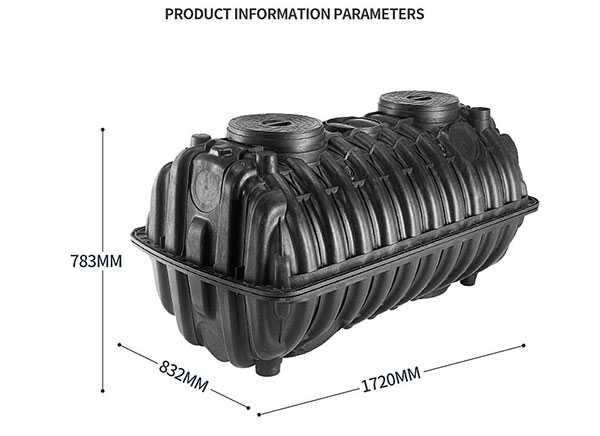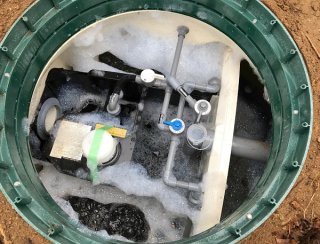Set Up Septic Tank Pumping: Lengthening the Life-span of Your Septic Tank
Translating the Language of Sewage-disposal Tank Services: A Reference of Terms for Clear Interaction and Understanding
Are you confused by the lingo utilized in sewage-disposal tank solutions? Don't stress, we have actually obtained you covered! In this write-up, we'll assist you decode the language of septic system solutions with an useful glossary of terms. From understanding the basics of your septic container to managing sludge accumulation, we'll offer clear descriptions to make sure clear interaction and understanding. State goodbye to complication and hello there to a properly maintained septic system!
Septic System: Recognizing the Basics

If you are not familiar with sewage-disposal tanks, they are below ground containers that hold and deal with wastewater from your family. These storage tanks are a crucial part of your home's pipes system, liable for securely and successfully handling the waste produced by your daily activities. Understanding the basics of sewage-disposal tanks is crucial in order to guarantee their correct capability and avoid pricey repair work.
A sewage-disposal tank contains 2 major parts: the tank itself and the drainfield. The storage tank is where the wastewater flows into, and it is designed to divide solids from liquids. The solids work out at the end of the container, developing a layer of sludge, while the liquids, referred to as effluent, surge to the top. The effluent then flows right into the drainfield, where it is additional treated and spread into the surrounding dirt.
Routine maintenance of your septic system is important to stop issues such as obstructions, backups, and system failings. It is suggested to have your tank pumped every 3 to five years, depending upon its size and usage. Additionally, it is necessary to be conscious of what you flush away and toilets, as particular chemicals and materials can hurt the bacterial balance in the container.
Drain Field: The Duty of Soil in Garbage Disposal
To keep the appropriate capability of your septic container system, it is essential to recognize the duty of the drain field in garbage disposal and just how the surrounding soil plays a key role in this process. The drain area, additionally called the leach field or absorption area, is a necessary component of a septic system. Its main feature is to filter and treat the wastewater that streams out of the septic system.
As soon as the wastewater leaves the septic tank, it is distributed uniformly throughout the drainpipe field through a network of trenches or pipelines. The drainpipe area is composed of a layer of crushed rock or rock, which assists to disperse the wastewater equally and advertise effective filtering. Below the crushed rock layer, there is a layer of dirt that acts as a natural filter.
The soil in the drain field plays an essential function in the treatment of wastewater. As the wastewater percolates through the soil, it goes through a natural process of filtering and purification. The dirt acts as a biological and physical filter, removing dangerous microorganisms, infections, and various other impurities from the wastewater.
The structure and high quality of the soil are essential for the efficient performance of the drainpipe field - septic tank pumping. The dirt ought to have good percolation rates to permit the wastewater to move via it quickly. Furthermore, the dirt needs to have sufficient oxygen levels to support the development of cardiovascular bacteria, which help in the breakdown of natural issue in the wastewater

Effluent: the Liquid Waste From Your Septic Tank
As the wastewater leaves the drainpipe area, it is called effluent, and it is essential to comprehend the qualities and monitoring of this this contact form liquid waste from your septic tank. Effluent is the term utilized to describe the treated wastewater that spurts of your septic tank and into the drain field. septic tank pumping. This liquid waste consists of a combination of water, raw material, and dissolved solids
Effluent should be clear and totally free of any type of unpleasant odors. If you see any type of nasty smells or discoloration, maybe a sign of an issue with your septic tank. Routine upkeep and pumping of your sewage-disposal tank can assist make certain that the effluent remains tidy and free from pollutants.
Correct administration of effluent is vital to prevent contamination of the surrounding setting. The drain area is created to filter and deal with the effluent before it gets in the dirt. It is necessary to avoid any type of activities that might potentially damage the drain area, such as parking lorries or planting trees with deep root systems.
Sludge: Managing Strong Waste Build-up
When managing solid waste build-up in your septic system, proper administration of sludge is crucial. Sludge refers to the thick layer of solid waste that builds up at the base of your septic container over time. Otherwise taken care of properly, sludge can cause check it out different issues, such as clogging, back-ups, and also system failure.
Normal upkeep is vital to avoid sludge buildup. It is recommended to have your septic system pumped every three to five years, relying on the size of your family and the tank's ability. Pumping removes the gathered sludge, permitting your septic tank to function successfully.
Along with regular pumping, there are a few actions you can require to decrease sludge build-up. First, bear in mind what you purge down the drain. Stay clear of dealing with non-biodegradable products, such as paper towels, baby diapers, and hygienic items. These can contribute to sludge accumulation. Second, take into consideration making use of septic-safe products that won't interrupt the natural microbial equilibrium in your system.
Pumping: Keeping the Wellness of Your Sewage-disposal Tank
Maintain the health of your septic tank by regularly pumping it. Pumping is a vital maintenance task that assists stop issues and makes certain the correct performance of your septic tank. With time, strong waste and sludge accumulate in the tank, which can lead to obstructions, back-ups, and also system failure. Pumping eliminates these built up solids, enabling the tank to continue running successfully.
Routine pumping is advised to avoid the sludge from getting to high levels. The regularity of pumping relies on different elements such as the size of the container, the number of occupants in your click resources household, and the use of water. On average, septic systems need to be pumped every 3 to five years. It's crucial to note that every system is one-of-a-kind, and it's best to seek advice from with an expert to determine the ideal pumping schedule for your certain situation.
Conclusion
So there you have it: a convenient glossary of terms to assist you much better comprehend the language of septic system services. Whether it's finding out about the fundamentals of septic containers, comprehending the duty of the drainpipe field, or understanding just how to handle sludge accumulation, this reference will make sure clear interaction and a better understanding of your septic tank. Maintain these terms in mind to maintain the health and capability of your septic system.
A septic container is composed of two primary elements: the storage tank itself and the drainfield.Regular maintenance of your septic container is essential to avoid concerns such as blockages, back-ups, and system failings.To maintain the proper functionality of your septic tank system, it is vital to understand the function of the drain area in waste disposal and how the surrounding dirt plays a key role in this procedure. It is recommended to have your septic storage tank pumped every 3 to 5 years, depending on the dimension of your household and the tank's ability. Whether it's discovering regarding the basics of septic tanks, comprehending the function of the drainpipe area, or understanding how to deal with sludge buildup, this reference will certainly guarantee clear communication and a better understanding of your septic system.